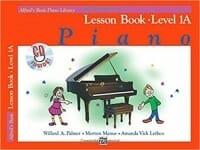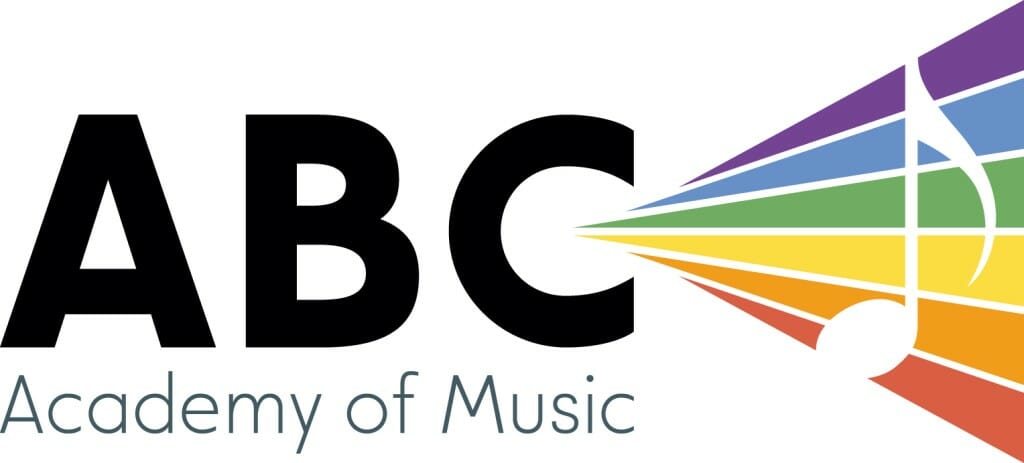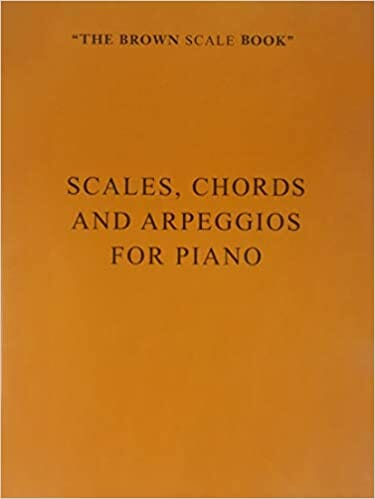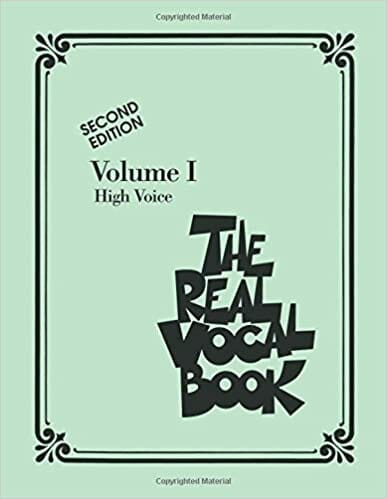B.Mus (Humber) in-progress
Adina is a singer-songwriter based in Toronto completing her Bachelor of Music degree at Humber College in vocal performance. Trained classically in piano since the age of 5, she has branched out into pop and jazz as well.
Vocally she is well-versed in many genres including jazz (she loves to scat!), musical theatre, pop, singer-songwriter, country, R&B, and acappella. She has 7 years of choir experience in both chamber and jazz styles. Adina has been writing and singing original songs since the age of 12, and has two singles as well as an EP out on all platforms under the artist name Adina V.
She has performed all across southern Ontario singing with the Toronto All-Star Big Band, as well as at various venues in the GTA with her own jazz duos and trios. As a member of the Cawthra Park Chamber Choir she performed at Roy Thompson Hall with the TSO for two years in a row. At Humber College she is part of the Vocal Jazz Ensemble led by Lisa Martinelli; this group performs advanced repertoire at events like the Ontario Vocal Jazz Festival.
Adina has been teaching music for the past 7 years and loves helping students meet their personal goals while fostering a love of music that lasts forever!
Get to know Adina…Beyond the Bio!
Hobbies: reading, puzzles, video games, painting
Musical Influences: Ella Fitzgerald, Nancy Wilson, Doris Day, Joni Mitchell, Taylor Swift, John Mayer
Favourite Food: Pad Thai
Least favourite food: eggplant
Favourite music: Indie rock and folk
Favourite song: All I Need by Jacob Collier ft. Mahalia & Ty Dolla $ign
Favourite movie: Matilda
Favourite movie music: The Pirates of the Caribbean theme
Favourite Musical: Dear Evan Hansen or The Last Five Years
Best Quote from your teacher: “It’s an amazing and wonderful experience to be able to be intentional about, in the moment, making music”
Favourite Quote: “Even as we are, we are becoming”
Favourite Book: The Girl With the Dragon Tattoo trilogy – Stieg Larsson
Best thing about teaching at ABC: Sharing and fostering a love of music with students of all ages
Latest Homework from Adina
Is Adina Your Teacher?
Sign up now to get your weekly assignments delivered, and never lose your homework sheet again!
Sunday, March 28th, 2021
Sahil
Recommended minutes to practice: 10-15 minutes a day
What to practice: Thumbs on C piano warmup, Happy Birthday (playing and singing), Twinkle Twinkle (playing and singing), Old MacDonald, Night Begins to Shine (first minute).
How to practice it most effectively: In the thumbs on C warmup, we start and end on C. Play with both hands finger 1s together on middle C, then 2s together, 3s together etc. outwards then back inwards. Do your best to connect between the notes. In Happy Birthday, we play in the same thumbs sharing C position as the warmup. In the 3rd line of the song RH does what we call skips, with finger 5 on G, 3 on E, and 1 on C. When singing along, listen carefully that your voice is matching the same pitches the piano is playing. In Twinkle Twinkle, remember that “how I wonder what you are” is on F-F-E-E-D-D-C. Old MacDonald notes are in last week’s homework post – RH is in C position and LH is in D position. Please use the lyric video for Night Begins to Shine and practice singing along to the first minute. We will start with this one next week!
When getting the piano book for next week, please make sure you choose the lesson book (there are many versions that look the same except for this important title distinction).
Nathalia
Recommended minutes to practice: 15 minutes a day
What to practice: A major scale (hands together), Runaround Sue
How to practice it most effectively: When playing A major, remember that our sharps are F#, C#, and G#. Finger 3s play together on the 3rd and 6th degrees, which in this case are C# and F#. In Runaround Sue, notice how bars 1-8 and 17 to the end are essentially the same, just with LH playing in different octaves (higher the first time around, then the octave lower the second time). These two sections can be put hands together now, paying attention to the rhythms and timing. Once notes and rhythms feel comfortable, please do add the staccatos since they make the piece bouncy and fun! The middle section (bars 9-16) you can play just one hand at a time, using your sayings to confirm notes. Remember that pairs of swung eighth notes do include rests, so for example in bar 9 that first eighth rest is the long part of the beat, and the eighth note after is is short.
Tuesday, March 30th, 2021
Anaya
Recommended minutes to practice: 10 minutes a day
What to practice: G position warmup (hands together), D and F scavenger hunt, Wishing Well, finishing page 35 worksheet
How to practice it most effectively: In the G position warmup, please play slowly and carefully so that all notes are even and lining up between the hands. There was some confusion between the D and F keys on the piano, so please do a scavenger hunt (finding all the keys of that letter name on your piano) for each of these. Remember, D is right after C – part of the group of 2 black keys, and F is right after E – part of the group of 3 black keys. In Wishing Well, let’s do the repeat this week and practice playing with dynamics! Play your first time through forte (loud) and the second time through piano (soft).
Saskia
Recommended minutes to practice: 10 minutes a day
What to practice: Vocal warmups, Do a Deer, Dynamite
How to practice it most effectively: One of two vocal warmups we discussed in class are the sirens (low to high then back down, sliding on ooh –> ah) or sighs (just high to low, sliding on ah) which are done on no specific pitch, just sliding around your range. The other warmup is the 3-note “ya ya ya” scale up then back down – if you do get a piano app on a phone or tablet, consider getting one with the letters on the keys. Then you can have a clearer guide to the pitches of this warmup by playing C-D-E-D-C. From there, pick a new starting note and sing the same exercise slightly higher every time. For Do, a Deer, the chorus section is sounding very good and comfortable, so let’s try learning the short verse at the beginning using the lyric video from last week’s homework post. Dynamite has a lot of lyrics happening very fast, which is why I highly suggest singing along using that lyric video too so you know exactly what they are saying!
Gianna
Recommended minutes to practice: 15-20 minutes a day
What to practice: C major and G major warmup, Life is an Adventure, Shake it Off
How to practice it most effectively: For the familiar C major warmup, please be extra careful to pronounce each letter’s vowels and consonants clearly (most are an “ee” vowel). In the G major warmup, remember that the one black key is an F# – this means that we play the first note in the group of 3 black keys instead of the white key F. For Life is an Adventure, your hand position for playing the notes is LH finger 1 on C, 2 on Bb, and 3 on Ab, and RH finger 2 on Eb, 3 on F, and 4 on G. From there you’ll never have to move! Be extra careful matching your vocal pitch to the two lowest notes. Please practice singing and playing the whole song, using a complete lyric and note sheet I’ve made: https://docs.google.com/document/d/1q8xwAPiytqgH1z2uuJhQLDvQwLKsBBUjK0usJ_rUKnw/edit?usp=sharing
In Shake it Off, only focus on singing the main melody (no need to do little details like a giggle or any spoken parts you’re not comfortable with). For the chorus specifically, don’t sing the word or two at the ends of phrases – things like “and the”, or “baby”, or the “ooh ooh ooh”s so you can use that time instead to breathe!
Ken
**If mom or dad could please double check any settings on your keyboard that have made you lose the ability to play dynamics (loud vs. soft touch on the keys) – a few weeks ago you were able to do crescendos and decrescendos, but today you showed me that no matter how hard you played, the volume stayed the same.
Recommended minutes to practice: 15 minutes a day
What to practice: E major scale (hands separately), Storms on Saturn, Cheers for D Chords, Memories
How to practice it most effectively: The E major scale uses the same fingering as all our other scales, but with another added sharp. The new sharp is D#, and we still have F#, G#, and C#. Storms on Saturn uses the foot pedal to create a cool holding effect – keep the pedal pressed down for the whole piece! The initial position is LH finger 4 on Gb, and RH finger 1 on D (finger 5s do not play). Please make sure whole notes hold for 4 counts! Don’t just rush through them to the next new note. Cheers for D Chords uses D major triads (2 stacked skips, with an F#) – careful with the hands crossing over each other and which octave they’re meant to play in. Absolutely continue playing Memories on piano – I found this YouTube piano tutorial (might be the one you’ve already used) which is quite good!
Steve
Recommended minutes to practice: 15 minutes a day
What to practice: The Puppet Show (warmup song), Moonlight Melody, and Kitch-iti-ipi
How to practice it most effectively: The Puppet Show is a song that uses only semitones – play this as a quick warmup once through before playing your other pieces. This week add dynamics in Moonlight Melody, making the first and 3rd lines piano, and the 2nd and 4th lines mezzo forte (except the ending, of course). Notice the pattern in RH’s eighth note lines and how it’s the same for both the 2nd and 4th lines. For new song Kitch-iti-ipi, RH starts by paying a chromatic scale: this is when we move from C to C using all semitones. Please use the written fingering, this is very important! Use your clef sayings to help you find the triads in the second half of the song, and be careful when RH switches from all lines to all spaces.
Gabe
Recommended minutes to practice: 20 minutes a day
What to practice: Habanera, Canon (RCM)
How to practice it most effectively: For Habanera, remember to play bass clef notes staccato – think sneaky! This adds to the character of the piece. RH, on your first page make sure to differentiate between the first time through the line (with the G#) and the second time through (G natural). LH, notice where the D to D pattern changes to include Bbs, and later thirds. RH can continue reading ahead into the second section – this is the melody you are familiar with, except that sometimes there is an interval underneath as well (this will only ever be a 3rd or a 6th). Please continue to practice the Canon, since even though we did not get to it today, we will start with it next week.
Isaac
Recommended minutes to practice: 20 minutes a day
What to practice: Blinky the Robot, page 63-64 in the theory book
How to practice it most effectively: For the first page of Blinky the Robot, please aim to make your staccatos crisper and more energetic. They should be very short – not simply detached. Once it becomes more comfortable, also start adding in dynamics for this page. For the newer second page, go through it slowly, noticing familiar or repeated shapes. For those crunchy chords in the first part of the second page, think of them as simply B-E fourths for RH and an E-B fifth for LH; then add the semitone under the top note. Do be careful in the parallel movement sections since we found a few repeated intervals! (The A and Es).
Wednesday, May 26th, 2021
Dvorah
Recommended minutes to practice: 10-15 minutes a day
What to practice: C major scale (RH), Allegro, and Elephant Ride
How to practice it most effectively: The C major scale goes from C stepping all the way up to the next C then back down. For RH, the fingering is 1-2-3-1-2-3-4-5 (so you tuck your thumb under finger 3 between E and F). The way down is the exact same thing but backwards (so finger 3 crosses over your thumb between F and E). In Allegro, the hands play together in bars 1,2 and 5,6. LH, please make sure you ground down and hold the whole note for the full bar, even though RH is playing other notes. Our skips in this song go from line to line. For Elephant Ride, our skips go from space to space – bars 1, 3, and 5 are all skips and all the same!
Diya
Recommended minutes to practice: 15-20 minutes a day
What to practice: “na na na” warmup (steps then skips), Best Day of My Life, Never Enough, Ferris Wheel
How to practice it most effectively: For the “na na na” warmup, start by going up in steps (so C-D-E, E-D-C etc.), then after 5 or 6, switch to skips (C-E-G, G-E-C etc.). For Best Day of My Life, focus on the verse lyrics – one day only practice verse 1 a bunch of times, the next only practice verse 2, etc. In the chorus, try adding a gentle H to the “li-i-i-i-i-i-fe” part to avoid too many glottals. For Never Enough, we spoke about staying on the previous note for the words “way” and “now”, where the melody goes too low. On the word “enough”, make sure your vowel is nice and long, just like you’re already doing on the word “never”. For Ferris Wheel, you can use your finger #s as well as sayings to help you find notes. Please play everything but the last line hands together, doing your best to connect under the slurs.
Marco
Recommended minutes to practice: 15 minutes a day
What to practice: C’s Rock, Mozart’s Five Names, and Paper Airplane
How to practice it most effectively: C’s Rock is a warmup piece that helps us practice knowing where our 3 C’s are (bass C, middle C, and treble C). Remember to be extra bouncy on those staccatos! Mozart’s Five Names has a lot of the hands playing together in unison (meaning they are playing the exact same notes). RH has a new note D – the 4th line of treble clef, between the C and E of FACE in the space. Watch out for the hands’ position switches! For Paper Airplane, we circled whether each bar for RH is moving in steps or skips. Use this as a guide as we play in treble C position. The third line is the hands playing in unison once again.
Alice
**Alice will need the next piano book in the series soon, since we are a couple of weeks away from finishing the Primer Level. Here is a link to the Piano Adventures Level 1 Lesson book: https://www.amazon.ca/Level-Lesson-Book-Piano-Adventures/dp/1616770783/ref=sr_1_1?crid=2FYV290TRU07R&dchild=1&keywords=piano+adventures+level+1&qid=1622080895&sprefix=piano+adven%2Caps%2C177&sr=8-1
Recommended minutes to practice: 15-20 minutes a day
What to practice: Copycat, Grandmother, and Little Do You Know
How to practice it most effectively: For Copycat, really watch your steps versus skips, especially in lines 2 and 4 where there is a very slight difference. Remember, LH is always copying RH! For Grandmother, there are lots of skips – in the bottom line the hand are sometimes playing together, so please be extra careful with which hand plays which notes. The ending is in harmony, with both hands stepping down and making quite a nice sound. For Little Do You Know, please sing with the karaoke this week. Remember you get 3 beats and then you’re in with what’s called a “pickup” line (the “little do you-“). Watch out for Sierra’s verse lines that go really high! Please brainstorm a song or two you’d like to start working on next week.
Linda
Recommended minutes to practice: 20 minutes a day
What to practice: Calico Cat, Pyranese Melody, and I’ve Got You Under My Skin
How to practice it most effectively: Calico Cat is quite close to being done; just double check the RH rhythms in bars 9, 10, 13, and 14. Pyranse Melody is in A major, meaning we have F#, C#, and G# in the key signature. Try reading through this one hands separately this week. For Under My Skin, we spoke about the D-7b5 to G7b9 cadence and why it’s actually quite easy for your RH to play these two chords in succession: D-7b5 is D-F-Ab-C in the RH (with LH playing a D root), and G7b9 is D-F-Ab-B in the RH (with LH playing the G root). Only your RH pinky has to move down 1 semitone between these chords! This same concept occurs between E-7b5 and A7b9. Technically, what your RH is playing (D-F-Ab-B) is a D diminished 7 chord. The F diminished 7 chord on page 2 is the same notes just with F as the root, so feel free to play the exact D-F-Ab-B shape in RH with an F in LH.
Emet
Recommended minutes to practice: 20 minutes a day
What to practice: B minor triads (1 octave hands separately), Walk Don’t Run, and Tarantella
How to practice it most effectively: For the B minor triads, we use the same fingerings as other triad families – keep your hand high up into the keys so it’s easier to play that F#. For Walk, Don’t Run please isolate bars 9 and 11 for the rhythm between the hands; it will help to say the counting with ands out loud. The whole piece may be played hands together now! For Tarantella, you can start playing the entire form through (including the DC al Coda). Please double check your octaves for the coda section. There are some pretty dramatic dynamics in this piece – let’s add them in this week.
Kollel
Recommended minutes to practice: 20 minutes a day
What to practice: B major triads (hands together, 1 octave), The Black Pony, look at Allegretto in C Major if you want to try reading something new
How to practice it most effectively: For the B major triads, the same fingerings are used, just now there are 2 black keys (D#, F#) per triad. For The Black Pony, try isolating bars 13-16 three times before playing the whole thing through so that section can catch up in speed with the rest of the piece. You can add pedal now in the sections shown by the brackets. At the ending, a tempo senza rit means “at tempo, without a rit”, so hold the quarter rest for a full “1e+a” before coming in with the last 4 notes. I will try to get an intermediate version of The Entertainer for you next week.
Preferred Books for Adina’s Students
Click to buy them here, and they’ll come right to your house! What could be easier?
Alfred's Basic Piano Library Lesson Book 1A

Alfred's Adult Basic All-In-One
Alfred’s Basic Adult All-in-One Course is designed for use with a piano instructor for the beginning student looking for a truly complete piano course. It is a greatly expanded version of Alfred’s Basic Adult Piano Course that will include lesson, theory, and technique in a convenient, “all-in-one” format. This comprehensive course adds such features as isometric hand exercises, finger strengthening drills, and written assignments that reinforce each lesson’s concepts. There is a smooth, logical progression between each lesson, a thorough explanation of chord theory and playing styles, and outstanding extra songs, including folk, classical, and contemporary selections.
The Brown Scale Book
This essential resource includes all major and minor scales, triads, arpeggios, dominant sevenths, and chromatic scales organized by key. A favorite for decades, The Brown Scale Book belongs in every student’s library.
The Real Vocal Book
The Real Vocal Book has many of the selections from Volumes 1 and 2 of the instrumental Real Books, but now with complete lyrics added to the pre-existing melody line. This edition features 300 essential songs arranged for low voice, including: Alfie * All of Me * Autumn Leaves * Bewitched * Bluesette * Don’t Get Around Much Anymore * Fever * Georgia on My Mind * Misty * Moon River * My Funny Valentine * Satin Doll * and more. Looking for a particular song? Check out the Real Book Songfinder here.









